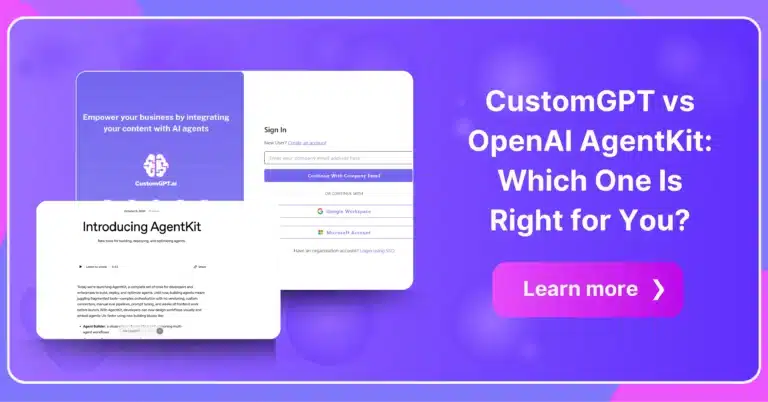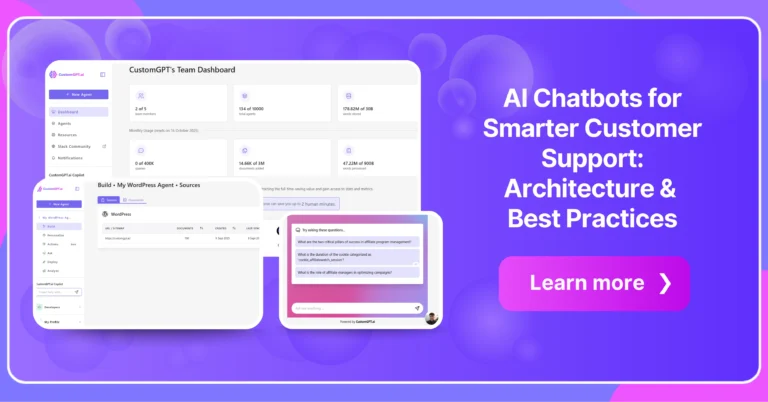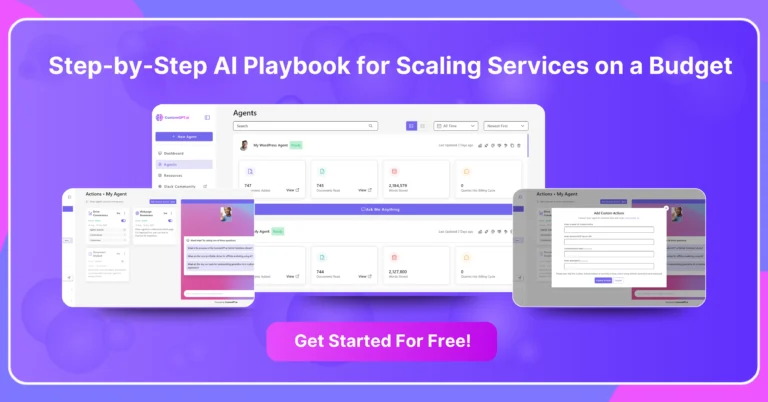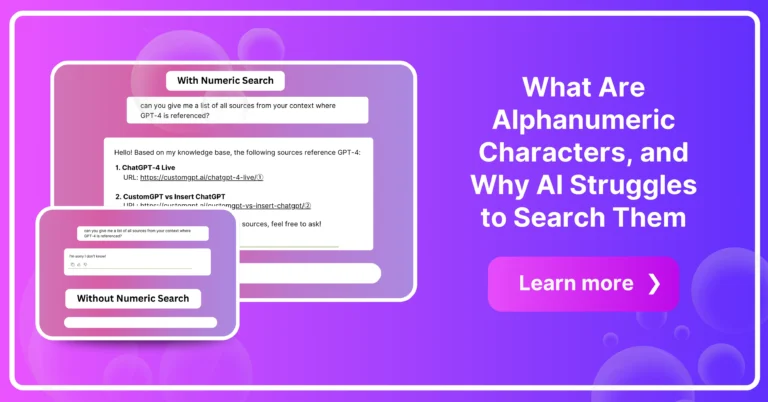The compliance landscape is changing faster than most organizations can keep up. Regulations are multiplying, standards are tightening, and the consequences of missteps are growing more severe.
From GDPR fines in Europe to new sustainability reporting mandates across industries, compliance has shifted from an operational checkbox to a board-level priority.
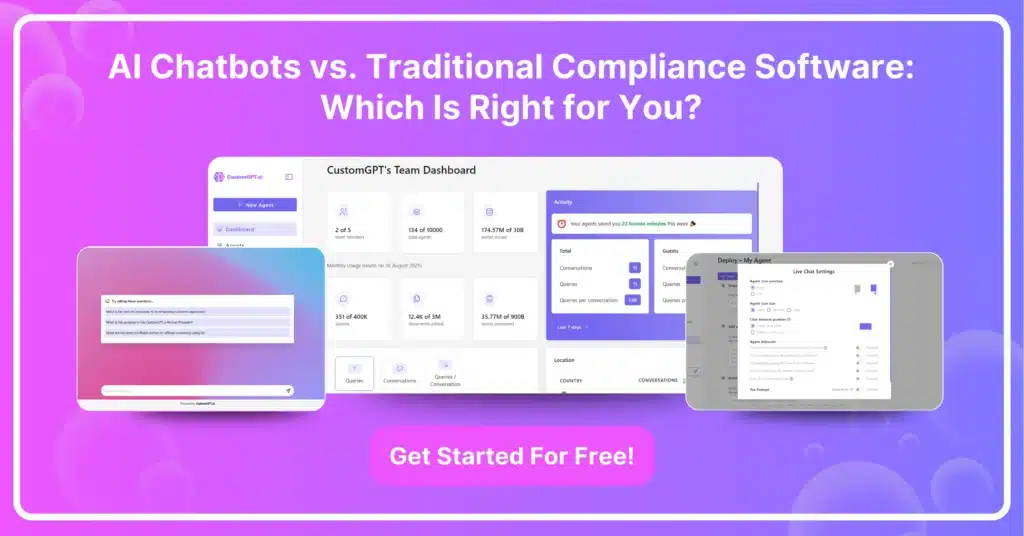
To meet this pressure, organizations have long relied on compliance management software, systems designed to store policies, manage audits, and track risk. But 2025 looks very different from 2015.
While traditional tools remain important, artificial intelligence, and particularly AI-powered chatbots, are rewriting what’s possible in compliance.
The question for leaders isn’t whether to digitize compliance. That battle is over. The question is: what kind of technology should you invest in next — traditional compliance software, AI chatbots, or a mix of both?
This article breaks down the strengths and weaknesses of each approach, explores a real-world case study, and offers practical guidance for making the right choice for your organization.
What Traditional Compliance Software Does Well
Traditional compliance software has been around for decades, and it exists for good reasons. For many organizations, these systems are the backbone of compliance programs.
They provide:
- Centralized document management: Policies, training manuals, and audit logs are stored in one location, making it easier to meet documentation requirements.
- Audit trails and reporting: Regulators often demand evidence of compliance activity. Traditional tools provide structured logs of who did what and when.
- Task tracking and workflows: Assignments, approvals, and reviews can be tracked, ensuring accountability across teams.
- Integration with governance, risk, and compliance (GRC): Many platforms connect compliance to risk management and internal controls, providing visibility to executives.
In short, traditional software excels at record-keeping, structure, and accountability. If you need to prove compliance after the fact, these tools are invaluable.
Where It Falls Short in 2025 (Speed, Accessibility, Cost)
But for all their strengths, traditional systems show their age in today’s fast-moving environment. The main shortcomings include:
- Slow information retrieval: Staff must know where to look. Finding a clause in a 200-page policy still means manual search.
- Limited accessibility: Many systems are designed for compliance officers, not frontline staff. Employees outside the compliance team often struggle to use them effectively.
- High cost and complexity: Enterprise licenses can run into six figures annually. Add in training and IT overhead, and adoption can stall.
- Reactive, not proactive: Traditional software helps prove compliance but doesn’t actively speed up decision-making or reduce day-to-day bottlenecks.
The net result is frustration. Compliance leaders get the documentation they need, but staff in housing, healthcare, finance, and public services are still slowed by the grind of finding and applying regulatory knowledge.
What AI Chatbots Bring to the Table (Speed, Sourcing, Flexibility)
AI chatbots, purpose-built for compliance, flip this model on its head. Instead of requiring staff to dig through databases, employees simply ask questions in natural language — and the chatbot provides a direct, source-backed answer.
Key advantages include:
- Speed: Routine queries that once took 30–60 minutes can be resolved in seconds. For example, “Am I subject to CSRD as a small cooperative?” returns an instant answer with a direct reference.
- Accessibility: Staff don’t need to learn a complex system. A chatbot interface is familiar and easy to adopt across departments.
- Transparency: Modern AI assistants are trained to provide citations for every answer. If the chatbot says “yes,” it also shows the clause that justifies it.
- Flexibility: Unlike traditional systems, chatbots adapt quickly. New regulations can be added through no-code uploads, keeping the assistant current without waiting for IT.
- Lower overhead: No-code deployment reduces dependence on engineers, making rollouts faster and cheaper.
In effect, AI chatbots move compliance from reactive documentation to proactive enablement. Instead of slowing teams down, they help staff act quickly and confidently.
Proof in Action: Housing’s Compliance Breakthrough
Theory is useful, but practice is better. One of the clearest examples of AI chatbots in compliance comes from Germany’s housing sector.
VdW Bayern DigiSol GmbH, the digital innovation arm of the region’s largest housing association, faced mounting compliance pressure. Teams were buried in regulatory documents, while smaller associations lacked the legal staff to interpret rules quickly.
Building WohWi AI with CustomGPT.ai
Using CustomGPT.ai’s no-code platform, VdW Bayern DigiSol GmbH built WohWi AI, a chatbot trained on more than 3,600 regulatory and operational documents (about 25 million tokens). Every answer included a direct citation, eliminating hallucinations and restoring trust in digital tools.
The assistant was built and deployed in under 60 days — a fraction of the time it would take to implement new traditional software. WohWi AI was embedded into wohwi-ki.de, a public portal now serving hundreds of housing associations across Bavaria.
Housing professionals use WohWi AI to:
- Interpret urban planning rules.
- Check applicability of sustainability mandates.
- Generate letters and tenant communications.
Tangible Impact
- 50–60% reduction in compliance task time
- 7,000+ queries answered in the first six months
- 84% positive feedback from professionals
As Dr. Korbinian Weisser, Managing Director at DigiSol, put it:
“Our AI solution now enables members to make informed decisions faster and with greater confidence — saving valuable time while ensuring compliance with changing regulations.”
This case proves the point: AI chatbots don’t just record compliance. They accelerate it.
👉 Read the full case study here
Key Factors to Choose the Right Path
Deciding between traditional compliance software and AI chatbots isn’t about hype. It’s about fit. Here are the questions leadership teams should ask:
- Do we primarily need record-keeping or real-time answers?
- Traditional software is best for structured logs.
- AI chatbots are best for rapid, everyday decision-making.
- Who are the main users?
- If the audience is compliance officers and auditors, traditional systems may suffice.
- If frontline staff need to apply rules daily, chatbots drive more value.
- What’s our timeline?
- If a project can wait 12–18 months, software deployment is feasible.
- If you need impact in under a quarter, chatbots win on speed.
- What level of transparency do we require?
- If audit packs and citations are critical, ensure your chatbot is designed for compliance, not generic Q&A.
- What budget are we working with?
- Software licenses and IT projects can be expensive.
- Chatbots typically offer lower upfront costs and faster ROI.
Side-by-Side: Finding Your Best Fit
| Factor | Traditional Compliance Software | AI Chatbots | Hybrid Model |
| Primary Strength | Record-keeping, structure, defensibility | Real-time answers, speed, accessibility | Combines audit trails with instant insights |
| Best For | Compliance officers, auditors, risk managers | Frontline staff, operations teams, customer-facing roles | Large organizations balancing agility and accountability |
| Deployment Timeline | 12–18 months, IT-heavy | <60 days, no-code | Varies: chatbot fast, software slower |
| Cost Profile | High licenses + customization | Lower overhead, no-code | Moderate — chatbot offsets software cost |
| Transparency | Strong audit logs, slower to retrieve | Sentence-level sourcing, instant | Both real-time citations and formal logs |
| Scalability | Enterprise-ready, but adoption is uneven | Easily adopted across teams | Broad reach plus structured governance |
Why Hybrid Models Win in Practice
In many cases, the answer isn’t either/or — it’s both. Traditional compliance software and AI chatbots can complement one another.
- Traditional systems: Provide structured record-keeping, risk registers, and audit documentation.
- AI chatbots: Deliver instant answers and operational efficiency to staff on the ground.
The hybrid model is powerful: frontline employees get speed and accessibility, while compliance officers still maintain structured oversight. For large organizations, this balance ensures both agility and accountability.
FAQs
Can AI chatbots replace our compliance software?
Not entirely. Chatbots excel at delivering answers, while compliance software handles formal record-keeping. Many organizations benefit from both.
Do we need engineers to manage a chatbot?
Not with no-code platforms. Compliance teams can upload documents, configure prompts, and manage updates themselves.
Are AI chatbots safe for compliance-critical tasks?
Yes, but only if they are trained on curated, sector-specific documents and provide source-backed answers.
How do chatbots handle evolving regulations?
Updates are simple: new documents can be added, and the chatbot immediately incorporates them into its knowledge base.
What about data privacy?
Purpose-built platforms like CustomGPT.ai ensure data remains within organizational control and compliant with regulations like GDPR.
Conclusion
Compliance technology is not a one-size-fits-all choice. Traditional software remains vital for structured record-keeping and audits. But as regulations accelerate and staff are stretched thin, AI chatbots represent the next logical step.
They bring speed, transparency, and accessibility to compliance work — not replacing experts, but empowering them. The VdW Bayern DigiSol case shows that when built responsibly, AI assistants can cut compliance task time in half and scale across entire sectors.
For organizations asking where to invest next, the answer is clear: AI chatbots are no longer optional — they are essential to keeping pace with regulatory complexity.
Ready to Build Yours?
Want to see how AI can accelerate compliance in your organization? 👉 Discover how CustomGPT.ai powers compliance at scale
Build an AI chabot for your business in minutes.
Streamline workflows, cut task time, and stay audit-ready — all in minutes.
Trusted by thousands of organizations worldwide





